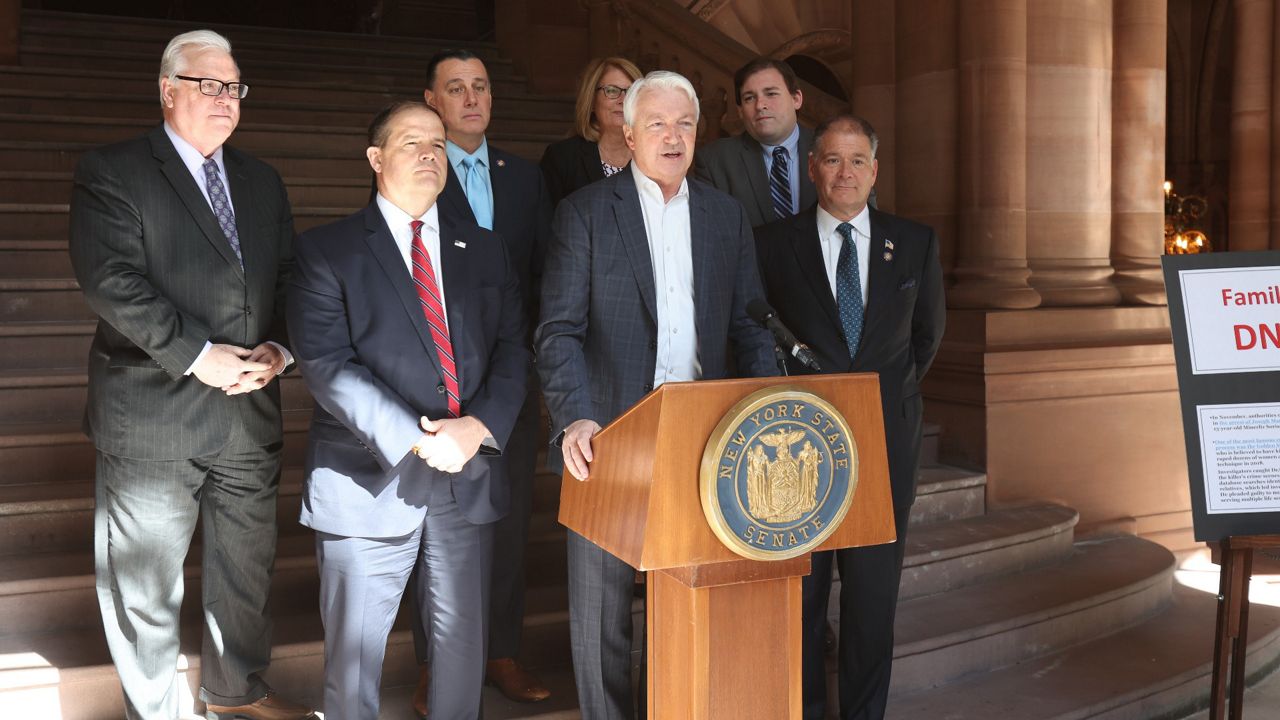New York lawmakers are reviving a push to allow law enforcement to search and test DNA of close relatives to a suspect to help solve violent crimes.
State Sen. Phil Boyle, a Republican from Bay Shore, reintroduced a bill this week to establish state policy to release information to law enforcement agencies to search familial DNA of people previously charged with a crime through the federal system, state Department of Criminal Justice Services or data publicly available through biotechnology companies that perform genealogical analysis like AncestryDNA or 23andMe.
"I cannot think of any more important issue we can be working on to protect New Yorkers," Boyle said.
The bill would allow familial DNA to help solve violent crimes including murder, rape, kidnapping or terrorism, and is necessary in wake of last week's Appellate Division decision in the case of Matter of Stevens v. New York State Division of Criminal Justice Services that determined familial DNA cannot be used in New York without a bill passed by the Legislature. Women make up the vast majority of victims of violent crimes.
Forensic scientists working to analyze DNA evidence from a crime scene may use DNA from someone who is a partial match, or close relative, of the defendant. A person's parent, sibling, aunt or uncle or cousin imprisoned for another offense coud help law enforcement solve a case depending on available samples at a scene.
"Obviously, that greatly reduces the nubmer of suspects from millions to half a dozen to find out who committed a crime," Boyle said. "It's a vital tool."
Law enforcement use DNA data available to them through a federal or state database or released by genealogical companies. Relatives could be forced to cooperate if law enforcement establishes a probable cause and issues a warrant for the data.
"We have to have predication and that's how we get it," Suffolk County District Attorney Raymond A. Tierney said. "We don't just get it."
Tierney dismissed the idea the search is a violation of the Fourth Amendment, which protects people from unreasonable government searches or seizures as long as police have predication to access the DNA data.
"We as government actors comply with the Fourth Amendment... Google, Apple, they're spying on us all the time," he said. "They don't comply and no one seems to have a problem with that."
Police recently solved the 42-year-old homicide of Eve Wilkowitz with genealogy testing.
"These DNA databases, this technology, it's critical in helping us solve violent crimes, rapes, murders, cold-case murders," Tierney said."We're talkinga bout a rising tide of crime and the public is concerned. What I'm asking is [lawmakers] to stop paying lip service to public safety and actually do something. Give prosecutors the tools they need to solve these problems."
The state Commission on Forensic Science and its DNA Subcommittee within the state Division of Criminal Justice Services decided in 2017 to make New York one of 11 states to allow law enforcement to utilize the DNA familial search and set guidelines.
Legislation to establish the policy passed with bipartisan support in a 49-11 vote that year, but died in the Assembly.
"At the time, we thought it was a done deal — the commission had spoken and familial searches would be allowed to be used by law enforcement," Boyle said.
The commission's guidelines remain in place, making it easier for the Legislature to move on passing the bill.
Boyle urged state Attorney General Letitia James to appeal the decision to the state Court of Appeals. Otherise, the Legislature must pass a bill for New York law enforcement to use familial DNA searches. The last scheduled day of session is June 2.
Boyle would support the bill if a Democrat in the Legislature's supermajority took up the issue, he said.
"There's no pride in ownership — let's get it done," he added.
About one-third of all DNA tests exonerate potential suspects, Boyle said. His bill remains in the Senate Internet and Technology Committee.
The senator has worked on DNA-related legislation at the federal and state levels since 1988 when DNA testing and advancements were in their infancy.



